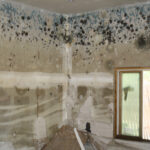Have you ever noticed a water stain on your ceiling and wondered how much it is damaged and how high the roof repair would cost?
If you own a property, you’ve probably gone through this feeling.
Roofs often develop problems slowly over time. These damages usually build up for months or years without being noticed. The issue is that most people only notice their roofs when there is a water leak present.
Roofing management steps in at this point.
Look at it as upkeep for the most important part of your home: the roof. Its purpose is not only to find fixes; it also aims to prevent damages before they happen.
Here, let’s find out what roofing management means and why it should matter to a property owner.
What Is Roofing Management?
Roofing management involves regularly inspecting, maintaining, repairing, and planning when to replace a roofing system. It concerns using a wise plan to protect and maintain the roof well in advance of problems that might appear.
Basically, it works the same way as a health plan, except it cares for your roof. Instead of waiting for serious damage, roofing management encourages regular inspection and preventative care as well as informed decisions.
While it’s very useful for those who handle many properties, it is just as necessary for homeowners looking to keep their homes protected.
Why Is Roofing Management So Important?
No matter if it is a home, business, or investment property, a neglected roof may place the safety, value, and lasting quality of your building at risk.
Let’s see in more detail why roofing management matters.
1. Protects Your Property from Major Damage
Roofs protect your building from the various elements, and even a small defect could let damage spread throughout.
What appears to be just a little leak can seep into insulation, weaken the ceiling, rot wood beams, and ruin the drywall. As time goes by, trapped moisture in walls can develop into toxic mold, which becomes hazardous for those living in the space.
Worse yet, water getting near electrical systems can cause serious fire hazards. Regular inspections and maintenance carried out through roofing management enable small problems to be fixed before they grow.
By adopting this process, damage is prevented from spreading and everyone and the building are kept safe.
2. Saves You Money in the Long Run
Neglecting your roof can be financially devastating. Emergency repairs after a storm or a major leak often come with inflated costs, not to mention the interior damage that may need fixing as well.
Roofing management involves scheduled inspections and minor maintenance tasks that cost significantly less than full-scale replacements or water damage restoration.
By addressing wear and tear before it turns into a crisis, you avoid sudden expenses and insurance claim headaches. Plus, a well-maintained roof lasts significantly longer, delaying the need for a costly replacement.
Ultimately, proactive roofing management is an investment that protects your bottom line.
3. Boosts Property Value
First impressions matter, especially when selling a property. A roof in excellent condition signals to buyers that the entire building has been well-maintained. On the flip side, a visibly damaged or aging roof can drive buyers away or become a negotiating point for lowering the sale price.
Roofing management helps ensure that your roof looks good and performs well year-round. It also means you’ll have a full maintenance history to show prospective buyers, making your property more attractive and trustworthy.
In the competitive real estate market, that edge can translate directly into a higher valuation and faster sale.
4. Ensures Safety and Compliance
A deteriorating roof isn’t just an inconvenience; it can be a serious safety hazard.
For commercial buildings, roofing issues can pose liability risks if falling shingles, loose flashing, or ceiling leaks cause accidents. Water intrusion can lead to slippery floors or electrical shorts, endangering tenants, employees, and customers.
To avoid all this, roofing management helps you stay compliant with building codes, occupational safety standards, and insurance requirements. Regular inspections catch safety hazards early and ensure the structure remains sound.
For businesses, this proactive approach not only protects people but also shields you from potential legal issues or costly penalties due to non-compliance.
Key Components of Roofing Management
So, what exactly does roofing management include?
It’s more than just patching up visible damage. Proper roofing management is a proactive, organized system designed to maximize your roof’s performance and longevity.
Here are the key components that make up a solid roofing management strategy:
1. Regular Inspections
At a minimum, roofs should be inspected twice a year, once in the spring and once in the fall.
Inspections identify issues like cracked or missing shingles, pooling water, damaged flashing, clogged gutters, and signs of rot or mold. Catching these issues early can prevent them from spiraling into full-blown problems.
Seasonal inspections are also a chance to assess storm damage, evaluate the effects of UV exposure, and track aging.
Professional inspectors typically document their findings with photos and reports, giving you a detailed record of your roof’s condition over time. This documentation is not only helpful for ongoing maintenance but also critical when filing insurance claims or selling your property.
2. Preventive Maintenance
Preventive maintenance is about addressing minor issues before they become costly repairs. This includes clearing debris, resealing joints, patching small cracks, replacing loose shingles or tiles, and checking that drainage systems like gutters and downspouts are working properly.
A clean, well-maintained roof functions better and lasts longer. Preventive care also includes inspecting vents, skylights, and penetrations in areas where the roof connects with other structures.
Without routine maintenance, even the highest-quality roofing materials can fail prematurely.
3. Repair and Restoration
Even with great maintenance, damage from extreme weather, falling debris, or aging materials can still occur. When that happens, quick and effective repairs are crucial.
A good roofing management plan ensures that a process is in place for identifying, prioritizing, and resolving problems quickly, minimizing downtime, and protecting your interior spaces.
Restoration may include replacing a section of the roof, resealing flashing, or reinforcing vulnerable areas such as valleys or edges.
Final Thoughts
Your roof does more than cover your property. It protects your home or business, your possessions, and your peace of mind. Thus, roofing management isn’t just a maintenance task; it’s a smart strategy that saves money, reduces risk, and adds value.
Waiting for something to go wrong is a gamble. With a solid roofing management plan, you’re not reacting to problems; you’re staying ahead of them.
So, the next time you glance up at your ceiling and wonder what’s going on above it, ask yourself: Do I have a plan or just hope?




